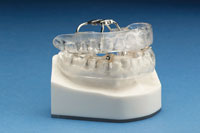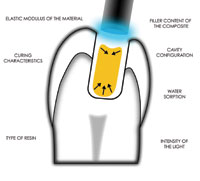Dentistry has a responsibility to adhere to scientifically accepted principles of infection control. The profession includes approximately 168,000 dentists, 112,000 registered dental hygienists, 218,000 dental assistants, and 53,000 dental laboratory technicians.1 It also includes dental students, postdoctoral trainees, and hospital residents. Further, there are thousands of other support personnel not directly involved in patient care but who may be exposed to potentially infectious agents. Toward this end, the American Dental Association published recom-mendations for infection control in the dental office in 1978.2 Nevertheless, the human immunodeficiency virus (HIV) pandemic that began in the early 1980s led to major changes in our view of infection control in dental practice.3,4
The Centers for Disease Control and Prevention (CDC) issued recommendations for infection control practices for dentistry in 1986 and again in 1993.5 Over the past 10 years, the profession has been diligent in its efforts to promote adherence to these infection control guidelines as they relate to safeguards to prevent disease transmission. The most current guidelines were published by the CDC in December 2003.1 Failure to comply with the guidelines can not only lead to an increased risk of adverse health outcomes, but depending on the state in which one practices, can also result in charges of unprofessional conduct, financial liability, and possibly the loss of the practitioner’s dental license.6
Members of the dental profession can be exposed to a variety of infectious agents, and the potential exists for them to spread these pathogens. These include the following: hepatitis B (HBV), hepatitis C (HCV), cytolomegalovirus (CMV), human immunodeficiency virus (HIV), herpes simplex virus types 1 and 2, Mycobacterium tuberculosis, staphylococci, streptococci, and many other viruses and bacteria that colonize the oral cavity and the upper respiratory tract. The organisms can be transmitted in a variety of ways, including patient to patient, patient to provider, and provider to patient, as well as through contact with unsterilized/unclean equipment, aerosol, and direct contamination. Infection requires a pathogen, a reservoir in which the pathogen survives and can be transmitted, a mode of transmission, and a susceptible host. The goal of any infection control program is to reduce the risk of infection by breaking the cycle of infection transmission, reducing the number of pathogenic organisms, using “Standard Precautions” and protecting patients, staff, and providers.
The focus of infection control is on barrier techniques, aseptic techniques, surface disinfection, and sterilization of instrumentation. Two recent areas of concern and emphasis are hand hygiene and the quality of water coming from the dental unit.
HAND HYGIENE
Hand hygiene in dental practice is one of the most important parts of the infection control process, and is considered the single most important activity when attempting to reduce the risk of transmission of microorganisms from provider to patient.
The method of hand hygiene is dependent on several factors. These include the type of procedure to be performed, the persistence of decontamination, and the potential risk of spreading infection. Gloves, often thought to be the complete effective barrier in protecting the provider and preventing the spread of microorganisms, have microscopic imperfections. This barrier gives the provider a false sense of security. According to the CDC, the use of gloves reduces the risk of contamination 70% to 80%, prevents cross-contamination, and protects patients and providers.8 Although gloves offer a means of protection, the wearing of a glove creates a warm, moist environment in which organisms can proliferate. This results in a large increase in the transient microflora, and therefore hand hygiene is essential to eliminate the transient and/or decrease resident microflora.
Table 1. Antimicrobial Spectrum and Characteristics of Hand-Hygiene Antiseptic Agents.*
Note: *Hexachlorophene is not included because it is no longer an accepted ingredient of hand disinfectants. Source: Centers for Disease Control and Prevention Web site, available at www.cdc.gov/mmwr/preview/mmwrhtml/rr5116a2.htm, accessed on |
For routine oral examinations, dental procedures, and those surgical procedures with low risk potential for infectious transmission, routine handwashing antisepsis can be achieved using either commercial or an antimicrobial soap with water, or an alcohol-based hand rub when hands are not visibly soiled. If used correctly, hand hygiene with either type of product reduces the transient micro-flora. Certain surgical procedures require the elimination of not only transient micro-flora, but a reduction of the residual microflora as well. This surgical antisepsis can be accomplished using 2 methods: (1) antimicrobial soap and water or (2) nonantimicrobial soap and water followed by an alcohol-based surgical scrub with persistent activity. When deciding which hand hygiene procedure should be followed, the categories established by Spaulding for the risk of spread-ing infection should be considered.9 These categories are critical, semicritical, and non-critical. Semicritical and non-critical procedures can be categorized as those in which intact skin, mucous membranes, and normally nonsterile environments are touched. For these procedures, routine handwashing, antiseptic handwashing with an antimicrobial soap, or alcohol-based antiseptic rubs (when hands are not visibly soiled) are acceptable. Critical procedures would be those in which penetration of soft tissue occurs and contact with normally sterile tissues is anticipated. For these procedures, surgical antisepsis is the only acceptable means of hand hygiene, and must include antiseptic handwashing with an antimicrobial soap or an alcohol scrub with persistent activity7 (Table 1).
Because of the frequency with which dentists and oral healthcare providers wash their hands, a number of factors beyond the essential antimicrobial properties of the product must be considered. Factors to consider are the delivery system, cost, provider acceptance of the product, allergy to the product, associated skin irritation, and product compatibility with gloves. The dispensing systems must be reliable, accessible to the provider, and easy to use, while maintaining asepsis. Asepsis of the dispensing system is achieved by making these closed systems, not allowing the addition of new product to the reservoir. Adding to the existing reservoir can cause bacterial contamination.10 Cost of the product is part of the overall cost of healthcare. Provider acceptance will correlate with compliance. Allergy, along with skin irritation and the subsequent development of contact dermatitis, can impact on provider acceptance, provider compliance, a provider’s availability to provide care, and may place the provider and patient at increased risk of exposure. Emollients that are added to some of the alcohol hand rubs and lotions, which serve to sooth the skin and prevent dermatitis, can, however, interact with the petroleum products within latex gloves. These emollients can weaken latex, increase permeability, and render gloves ineffective as a barrier.1
An essential part of dental practice is preparation of a policy and procedure manual that includes the types of hand asepsis to be practiced. Guidelines are based on the types of oral healthcare procedures to be performed and include the types of hand care products that must be available and directions for product use. Appropriate protocol for hand hygiene is essential.11 The current recommendations for hand hygiene for noncritical and semicritical procedures would be the following:
If using alcohol hand rubs, one should apply to the palm of one hand and rub hands together, being sure to cover all surfaces until dry. The volume of the rub should be based on manufacturer directions and should be dispensed appropriately.
For routine handwashing, hands should be wet with water prior to applying soap. Hands should be rubbed together for at least 15 seconds. Once complete, the hands should be rinsed and dried using a disposable towel. After completion, the faucets (if not foot operated) should be turned off using a paper towel as a barrier.
Dental Unit and Water Quality
The CDC has stated that: “Exposing patients or dental healthcare personnel to water of uncertain microbiological quality, despite the lack of documented adverse health effects, is inconsistent with generally accepted infection control principles.” To understand this concern, it is important to consider that water flowing through dental units and being delivered to patients via handpieces, triplex syringes, ultrasonic scalers, and drinking cups is carried primarily by narrow bore plastic tubing.
Fluid dynamics associated with these lines can lead to the development of an organized colony of microorganisms known as a biofilm. A biofilm is defined as a thin, usually resistant layer of microorganisms (as bacteria) that form on and coat various surfaces (such as the interior surfaces of catheters, dental unit water lines, and water pipes). The biofilm associated with dental waterlines is usually complex and includes bacteria, fungi, and protozoa. The organisms detected in the dental unit biofilm are not routinely pathogenic to the immunocompetent patient. Common organisms include: Pseudomonas spp., Legionella spp., Klebsiella spp., Lactobacillus spp., Streptococcus spp., Staphlycoccus spp., and nontubercular mycobacterium. Organisms in the inner part of the biofilm are protected and multiply while the outer organisms are bathed in the water that passes over it. This reservoir of organisms is able to embolize, travel through the dental unit water lines, and can be released in aerosols produced by handpieces, air/water syringe tips, ultrasonic scalers during dental procedures, and can occur in the drinking water. As the lumen of the tubing becomes smaller in diameter due to the buildup of the biofilm mass, there is greater fluid resistance and increased shear stress, leading to an increase in the number of organisms that are released.12
Standards for safe pot-able water have been set by the Environmental Protection Agency (EPA), the American Public Health Association (APHA), and the American Water Works Association (AWWA). These standards require that the number of heterotrophic bacteria are less than or equal to 500 colony forming units per mL (CFU/mL). Heterotrophic bacteria require complex organic compounds of nitrogen and carbon for metabolic synthesis. Therefore, the water used for routine noncritical and semicritical dental procedures should, at a minimum, match this standard.
Methods and strategies to improve and maintain the standard of water quality in dental units must be based on the characteristics of the dental office and the equipment being used. Water delivery varies from office to office, from unit to unit, and from municipality to municipality. Regardless of the circumstances, the water delivered during dental procedures must contain less than 500 CFU/mL. It is critical for the dental office to maintain the unit by following the manufacturer’s recommendations.
The most common types of water delivery systems are self-contained, municipal water supply with direct plumbing, and independent delivery.
Table 2. Dental Water Unit Disinfectants: Manufacturers and Products.
Source: This resource was downloaded from the Organization for Safety and Asepsis Procedures (OSAP) Web site. OSAP is a nonprofit organization, which provides information and education on dental infection control and office safety. For more information, call (800) 298-6727. |
Self-contained water delivery systems are easiest to maintain. The water is supplied through an attached reservoir and is the only water flowing to the unit. The majority of dental manufacturers at this time are using this type of delivery system. These systems allow easy access for disinfection, and can be used to deliver different types of irrigants. Multiple types of disinfectants are manufactured for use within the self-contained water reservoir, allowing the lumen of the waterlines to be cleansed13 (Table 2).
Table 3. Dental Water Unit Filtration: Manufacturers and Products.
Source: This resource was downloaded from the Organization for Safety and Asepsis Procedures (OSAP) Web site. OSAP is a nonprofit organization, which provides information and education on dental infection control and office sa |










